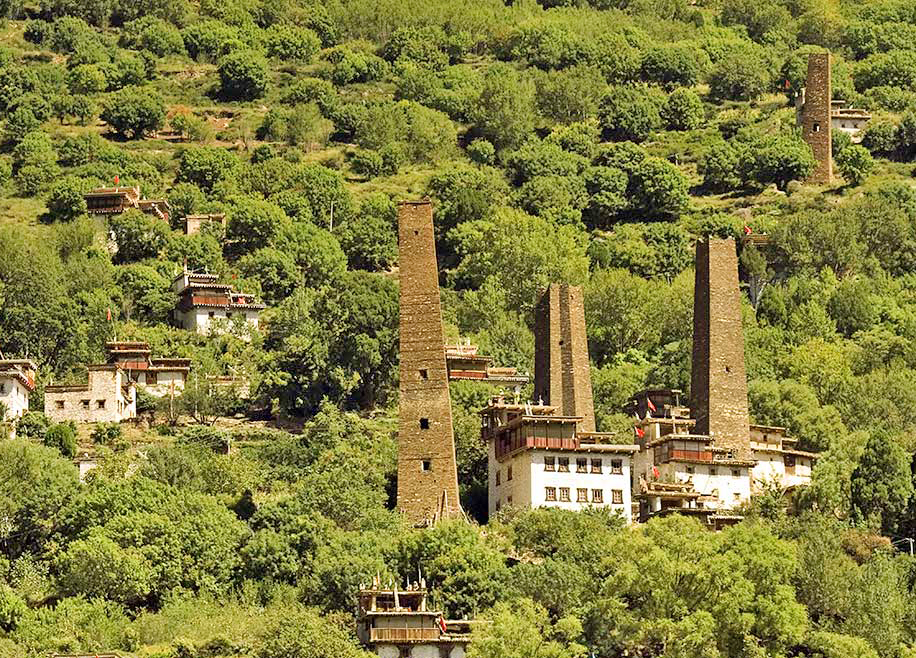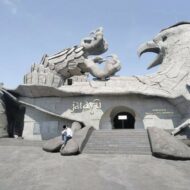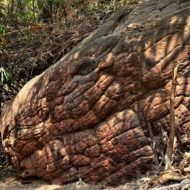The Himalayan Towers, are stone tower-houses believed to be built for prestige or defense purposes and mainly in Kham, a region of Tibet, as well as the area inhabited by the modern Qiang people and can be found in the historical region inhabited by the Tanguts.
A Himalayan tower is a stone monument found primarily in Tibet, often grouped with other towers. They were built around the 10th to 14th century and can be found in the regions of Qiangtang, Gyalrong, Miniak and Kongpo, an area the size of ten times the Benelux.
When they stand in strategic locations, they are defense or watchtowers. Others, built in villages on the agricultural plain at the junction of trade routes, may have been used to store valuable foodstuffs. In the regions of Kongpo and Danba, the towers seem destined to manifest the prestige of the family within the community.
In 2006, the World Monuments Fund placed the Himalayan Towers on the World Monuments Watch List of Cultural Sites in Danger. The towers were unknown to most cultural experts in China before they were included in the list of endangered sites. The World Heritage Fund has provided funding for the repair and preservation of some of the towers that have been vandalized or neglected over time. Locals have campaigned for the towers and their landscape to be inscribed on the UNESCO World Heritage List.
Highlights :
- The Himalayan towers Mentioned by the explorer Isabella Bird at the end of the 19th century and by the explorer Frank Kingdon-Ward in 1935, they were “discovered” by Michel Peissel in 19824 then “rediscovered” in 1994 and 1996 by Mathieu Col and towards the end of the 1990s by the French explorer Frédérique Darragon who made them her subject of study.
- The towers are built in a triangular shape, which makes them stronger than, for example, a rectangular shape. The same architectural style is used for other buildings in this area, which is often hit by earthquakes. The height of the towers sometimes reaches up to 60 meters.
- Himalayan towers found mostly in Kham, one of the three traditional provinces of Tibet and in the area inhabited by the modern Qiang people, in Sichuan Province and Tibet Autonomous Region.
- One hypothesis is that the towers were used to store goods from the ancient Tea and Horse Route, the chamagudao, when horses from Tibet were traded for tea from Yunnan and Sichuan.
- These towers were listed by the World Monument Fund as a Hazardous Historic Site in 2006 within World Monument Watch. Local residents also pushed for the inclusion of the towers as UNESCO World Heritage Sites.















